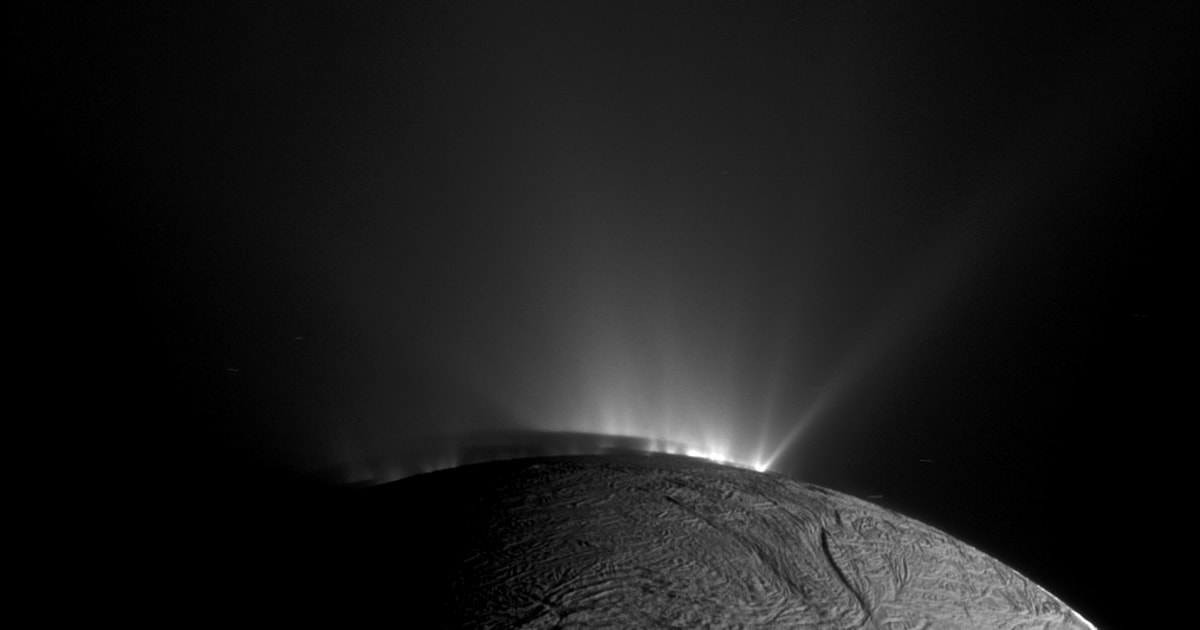
www.nbcnews.com
Tantalizing clues in the hunt for alien life draw astronomers' attention to two moons
Several scientific papers this year touch on the search for faint signs of life in our solar system — with a June paper on Jupiter's Enceladus offering one of the most intriguing prospects.
Science & Tech
In the hunt for life outside Earth, Mars is old news.
“I think I’d rate Enceladus now over Europa, and there were people who were saying Europa was a better prospect than Mars,” said Seth Shostak, the senior astronomer of the SETI Institute, a nonprofit organization near San Francisco that specializes in the search for life outside Earth. “So our ideas about where we might find critters of some sort keeps changing.”
Enceladus is an icy moon of Saturn, once overlooked by astronomers who figured it was too cold for life to have evolved, much as they did with one of Jupiter’s moons, Europa. Now, thanks to several scientific discoveries, including potential chemical “biosignatures,” scientists have begun to focus on the possibility that these celestial bodies could harbor microbial life.
There are already tantalizing clues that basic forms of life may have evolved on other planets and perhaps moons of the solar system. But as in most fields of scientific research, one step forward is sometimes followed by two steps back. For instance, research in September that proposed that phosphine gas in the clouds of Venus could be a sign of life has since been countered with studies that question its findings.
Taken together, the studies indicate that the search for extraterrestrial life in our solar system (scientists are also looking for life on exoplanets around distant stars, as well as radio signals that might be from distant civilizations) has broadened beyond an initial assumption that it might first be found on planets like Mars or Venus.
























































